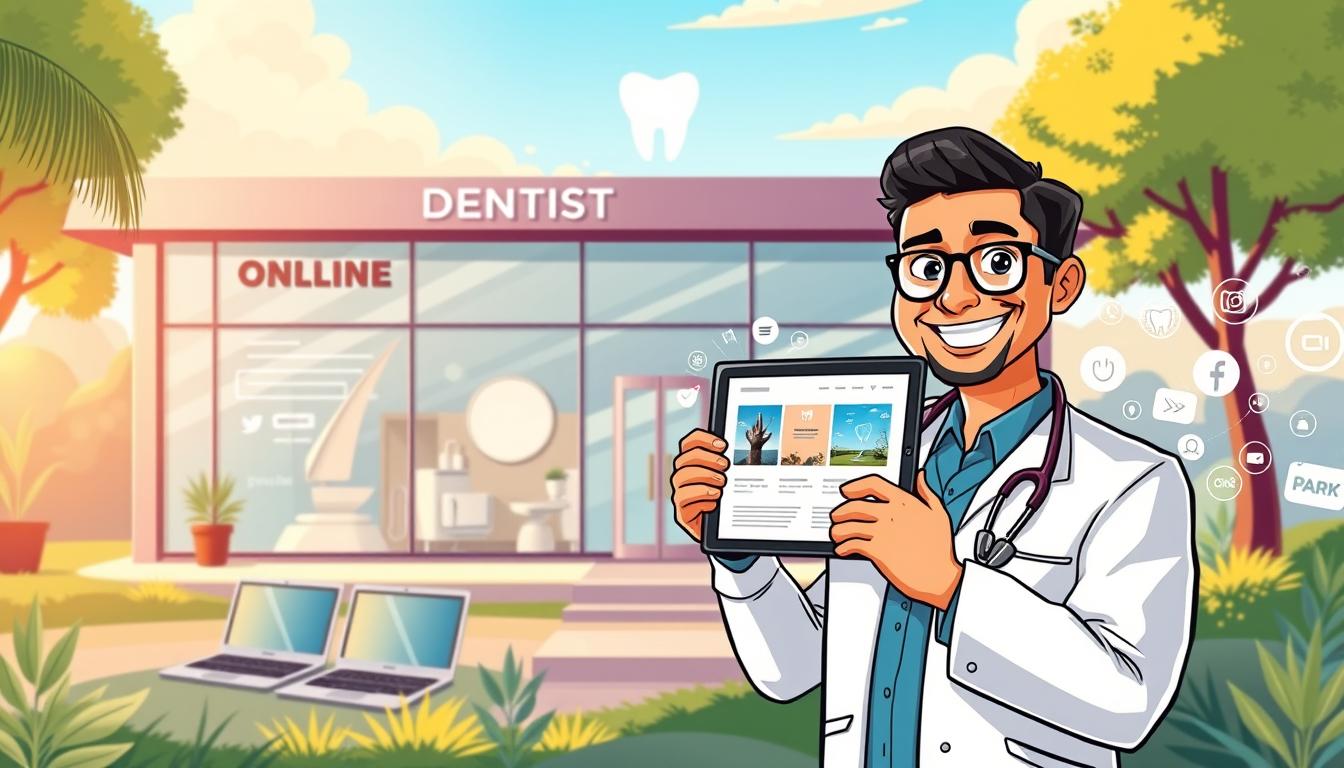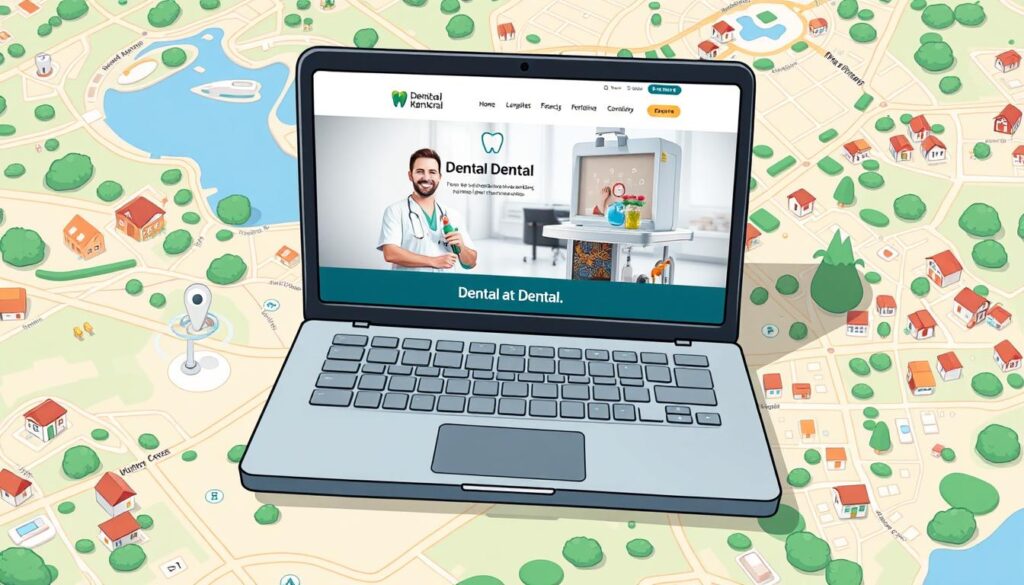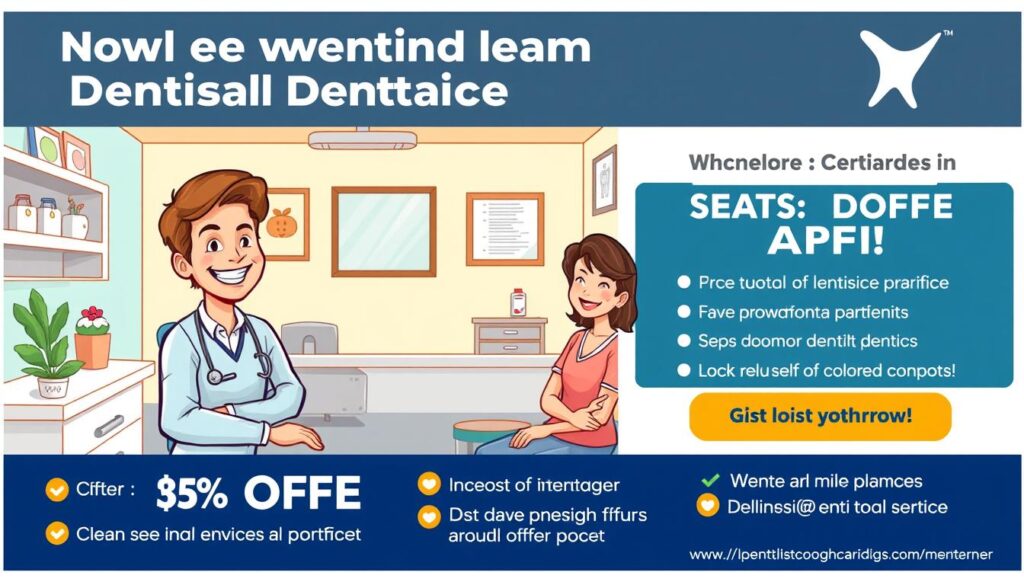Your cart is currently empty!

In today’s digital landscape, a staggering 3.5 billion searches are conducted daily, with many seeking dental services online. For dentists, having a robust digital marketing strategy is no longer a luxury, but a necessity to attract new patients and grow their practice.
A well-crafted marketing plan can significantly enhance a dental practice’s visibility, driving more patients to their doorstep. By leveraging various digital channels, including search engine optimization, social media, and content marketing, dentists can establish a strong online presence and stay ahead of the competition.
In today’s competitive dental landscape, digital marketing has become a crucial element for practices looking to expand their reach and attract new patients. The way people search for and interact with dental services has changed dramatically, with a significant shift towards online platforms.
Traditional marketing methods are no longer as effective as they once were. At least 70% of consumers prefer to learn about products through digital content rather than traditional ad methods. This shift in consumer behavior has led to a significant change in how dental practices approach marketing. Digital marketing offers a more targeted and cost-effective way to reach potential patients.
Moreover, traditional marketing leads to about 50% fewer interactions with patients than digital marketing. This disparity highlights the need for dental practices to adapt their marketing strategies to the digital landscape.
Online marketing provides numerous benefits for dental practices, including:
By leveraging these benefits, dental practices can establish a strong online presence, build credibility, and attract new patients. A well-executed digital marketing strategy is essential for modern dental practices to remain competitive and achieve long-term success.

Understanding and setting specific digital marketing goals is essential for enhancing your dental practice’s visibility and growth. To achieve this, you need to have a clear understanding of what you want to accomplish through your online marketing efforts.
Defining clear marketing objectives is the first step towards creating an effective marketing strategy. Your objectives should be specific, measurable, achievable, relevant, and time-bound (SMART). For instance, you might aim to increase your practice’s website traffic by a certain percentage within a specific timeframe or boost your social media following.
After establishing your marketing goals, it’s crucial to decide on a marketing budget that aligns with your objectives. Industry benchmarks suggest that dental practices typically allocate between 3-5% of their annual revenue to marketing. However, this can vary based on the practice’s maturity and growth goals.

By setting clear objectives and a realistic budget, you can create a focused marketing strategy that drives results for your practice.

In the competitive dental industry, local SEO serves as the cornerstone of a successful online marketing strategy. By optimizing your online presence for local search, you can significantly increase your practice’s visibility, driving more new patients to your door.
Your Google Business Profile is a critical component of your local SEO strategy. Claiming and optimizing your profile helps search engines understand your practice’s location, services, and reputation. To optimize your profile, ensure that your business name, address, and phone number (NAP) are accurate and consistent. Add high-quality photos of your practice, and encourage patients to leave reviews.
Regularly posting updates and offers on your Google Business Profile can also enhance your local search visibility. This includes posting about new services, staff members, or community events your practice is involved in. By keeping your profile active and engaging, you can improve your search engine rankings and attract more local patients.
Local citations and backlinks are essential for establishing your dental practice’s credibility and authority online. Local citations are mentions of your NAP on other websites, which serve as trust signals to search engines about your practice’s legitimacy and relevance. Building a robust profile of citations across dental directories, local business listings, and healthcare platforms helps search engines verify your practice information and improves local search rankings.
By focusing on these local SEO strategies, dental practices can improve their online visibility, attract more local patients, and ultimately drive business growth.

Creating a dental website that converts visitors into patients is a critical step in modern dental marketing. A well-designed website not only enhances your practice’s online presence but also plays a pivotal role in attracting and retaining patients.
An effective dental website must include several key elements to capture potential patients and encourage them to take action. These include:
With over 60% of healthcare searches occurring on mobile devices, mobile optimization is no longer optional for dental websites. A responsive design is essential for capturing potential patients. Other critical factors include:
By focusing on these elements and ensuring a seamless user experience, you can significantly improve your website’s conversion rates and ultimately grow your dental practice.

In the digital age, dental practices require effective SEO to reach potential patients actively searching for their services. A well-planned SEO strategy can significantly enhance a dental practice’s online visibility, driving more patient appointments and growth.
Conducting thorough keyword research is the foundation of any successful SEO campaign for dental practices. It involves identifying the terms and phrases potential patients use when searching for dental services online. Tools like Google Keyword Planner and SEMrush can help dentists discover relevant keywords, such as “dental implants,” “teeth whitening,” and “sedation dentistry.” By understanding these search terms, dental practices can tailor their content to match patient queries, improving their search engine rankings.
Having dedicated landing pages for each dental service is crucial for effective SEO. For instance, if a practice offers dental implants, sedation dentistry, and teeth whitening, they should have separate pages for each service. These pages should be optimized with relevant keywords, high-quality content, and clear calls-to-action. Service-specific landing pages not only improve user experience but also help search engines understand the practice’s service offerings, potentially boosting rankings for those services.
Technical SEO is vital for ensuring that search engines can effectively crawl, index, and rank a dental website. Key aspects include:
By focusing on these SEO strategies, dental practices can significantly improve their online visibility, attract more patients, and drive practice growth.

Google Ads offers dental practices a powerful tool to enhance their online presence and drive new patient appointments. By utilizing targeted advertising, dentists can reach potential patients who are actively searching for dental services in their area.
Google Search Ads are a highly effective way to increase visibility for dental practices. These ads appear at the top of search engine results pages (SERPs), ensuring that your practice is seen by potential patients at the exact moment they are searching for dental services.
Key benefits of Google Search Ads include:
Another way to enhance your dentistry’s digital marketing is to advertise directly on Google Maps using Local Search Ads. By utilizing local search ads, your ads are more integrated into the Google Maps experience, encouraging users to take vital actions such as making calls, requesting appointments, or getting driving directions to your office.
Local Search Ads on Google Maps offer several advantages:

Dental practices can significantly enhance their visibility and patient engagement through effective social media marketing strategies. By leveraging platforms like Instagram, Facebook, and TikTok, dental offices can build trust and familiarity with potential patients.
Creating an engaging social media presence is crucial for dental practices. Sharing content regularly helps make your team more approachable and gives people a better idea of what to expect during a visit. This can include before-and-after photos, patient testimonials, and educational content about various dental procedures.
To build a strong presence, dental practices should focus on creating content that resonates with their audience. This can involve sharing behind-the-scenes glimpses of the practice, highlighting community involvement, or providing tips on oral health.
Paid social media advertising allows dental practices to reach highly targeted audiences based on demographics, interests, behaviors, and geographic location. Facebook and Instagram ads offer sophisticated targeting options, including custom audiences built from existing patient email lists for retention campaigns or lookalike audiences for new patient acquisition.
Some key benefits of paid social media advertising for dental practices include:
By leveraging content marketing, dental practices can educate patients and establish themselves as industry authorities. This approach involves creating helpful and educational online resources that solve problems for users, increasing their touch points and affinity for the brand.
Educational blog content is a cornerstone of effective dental content marketing services. By publishing informative articles on dental health, treatments, and preventive care, dental practices can attract and engage their target audience. This not only helps in building trust but also positions the practice as a thought leader in the dental industry.
Infographics simplify complex dental information, making it more accessible and shareable across social media platforms and dental websites. Examples include statistical infographics highlighting oral health facts, procedure explainer graphics, and oral hygiene instruction graphics. Downloadable resources like care guides for post-treatment recovery also provide practical value that patients appreciate.
To maximize the impact, dental practices should ensure that all visual content is branded and distributed effectively. This includes optimizing for Pinterest, a platform known for driving traffic from health and wellness infographics to dental websites. Collaborative infographics with complementary healthcare providers can further expand the practice’s reach.
Email marketing stands out as a vital tool for dental practices seeking to maintain strong relationships with their patients and encourage re-engagement. By leveraging email marketing, dental practices can improve patient retention and reactivate inactive patients through targeted and personalized communication.
Building an effective email list is foundational to successful email marketing. This involves collecting email addresses from patients and potential patients through various channels such as the practice’s website, social media, and in-office sign-ups. It’s essential to ensure that the email list is segmented appropriately to allow for targeted campaigns.
Automated email campaigns can significantly enhance patient engagement and practice efficiency. Examples include welcome sequences for new patients, appointment reminders, post-appointment follow-ups, and reactivation campaigns for inactive patients. These automated workflows create consistent patient communication without requiring daily staff intervention.

The online reputation of a dental practice significantly influences patient trust and decision-making processes. In today’s digital landscape, managing your practice’s online presence is crucial for attracting new patients and maintaining a competitive edge.
Patient reviews are a critical component of your online reputation. To audit your dentistry’s reputation, perform searches on Google using your company name, dentist names, and company name + reviews. Encouraging satisfied patients to leave reviews can help counterbalance negative feedback and improve your overall online reputation.
Key strategies for generating and managing patient reviews include:
Negative reviews, although challenging, offer opportunities to demonstrate your practice’s professionalism and commitment to patient satisfaction. Responding promptly and thoughtfully to negative feedback is essential.
Best practices for responding to negative feedback include:
By effectively managing patient reviews and responding professionally to negative feedback, dental practices can enhance their online reputation, build trust with potential patients, and ultimately drive business growth.

Video content is revolutionizing the way dental practices connect with potential patients and showcase their services. Not only do high-quality videos make your site more enticing, but they also help your practice’s website soar through SEO rankings.
To maximize the impact of your video marketing, it’s crucial to create content that resonates with your target audience. Effective types include:
To ensure your video content reaches potential patients across their preferred channels, consider the following strategies:
By implementing these strategies, you can effectively showcase your dental practice through video marketing, enhancing patient engagement and driving conversions.
Understanding the success of your dental marketing efforts is critical to making informed decisions about your practice’s growth. An effective internet marketing plan should generate more revenue than it costs.
To measure success, track key performance indicators (KPIs) aligned with your practice goals. This includes monitoring website analytics, call tracking, and new patient source tracking. Analyzing these metrics helps identify which marketing channels drive the most conversions.
Regularly reviewing your marketing performance and benchmarking against similar practices optimizes your efforts to achieve better results over time. This data-driven approach enables informed decisions and maximizes return on investment for your dental marketing efforts, ultimately attracting more patients.
To improve your dental practice’s visibility, focus on Local SEO by optimizing your Google Business Profile, building local citations, and creating content that targets your service area.
An effective dental website should have a clear and simple navigation, be mobile-optimized, and include essential information such as services offered, office hours, and contact details.
To generate more patient reviews, encourage satisfied patients to share their experiences on platforms like Google and Facebook by providing excellent service and making it easy for them to leave a review.
Content marketing helps establish your dental practice as an authority in the field by creating educational and informative content that addresses the needs and concerns of your patients.
To measure the success of your dental marketing efforts, track key performance indicators such as website traffic, search engine rankings, and the number of new patient appointments generated.
Video marketing can help showcase your dental practice, build trust with potential patients, and provide an engaging way to communicate your services and expertise.
To optimize your dental website for search engines, focus on keyword research, creating service-specific landing pages, and ensuring your website is technically sound with fast loading speeds and secure browsing.
Social media provides a platform for dental practices to engage with patients, share information, and build a community around their brand, ultimately driving patient loyalty and attracting new patients.
“dental office name ideas”
Here is a potential meta description:…
Discover the top names of dental…